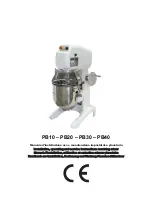
7 / 10
3. Equalizer
Each cannel has a 3-hand-EQ (HIGH, MID, LOW)
This EQ enables an attenuation range from -32dB up to +12dB. You can use this for
raising or lowering specific frequency ranges. Nevertheless the EQ is not for producing a
higher volume. Set the EQ at low volume and then raise the gain up to the required
volume. Consider the performance of your output system.
4. MIC/Line/Phono Switch
With this switch you can choose your required signal source.
5. Phono/Line Switch
On channel 2 and 3 you can choose between Phono and Line. You should use the Phono
input for turntables. The Line input you can use for the other signal sources
6. Fader
With this fader you can set the volume of the signal.
7. Talkover
By pushing the TALK button, the signal of the other input channels is lowered, enabling
your voice to be heard more clearly over the microphone.
8. Master
It controls the volume of the master output.
9. BAL
With this control you can set the balance.
10. Booth
It controls the volume of the booth output. The booth output is mainly used as output for
monitoring.
11. PFL
With this control you can set the volume of the dialed PFL signal on headphones.
12. CH 1, 2, 3
With this control you can select the required channel hearing on the headphones.
13. Master
With this fader you can set the output volume.
14. USB/SD Card Slot
USB and SD Card input slot. Left of it is the display which shows information about the
titles
15. Crossfader
It is for crossfading between the channels 2 and 3.
16. Level meter
The high-precision level meter accurately displays the appropriate signal level. .
17. Curve/Reverse
With this switch you can set the curve of crossfading. You also invert the direction of the
Crossfader with the reverse switch.




























